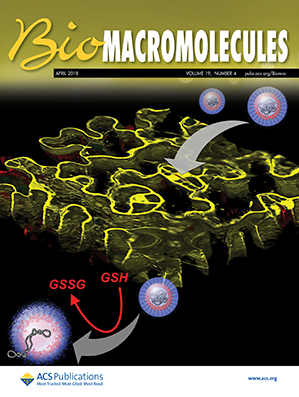Research in Brief
IF 5.5
2区 化学
Q1 BIOCHEMISTRY & MOLECULAR BIOLOGY
引用次数: 0
Abstract
Section snippets
Cabozantinib for advanced neuroendocrine tumours
Cabozantinib shows promise for patients with neuroendocrine tumours, according to the CABINET phase 3 trial. Jennifer A Chan and colleagues randomly assigned patients with previously treated, progressive advanced extrapancreatic or pancreatic neuroendocrine tumours to receive either cabozantinib 60 mg or placebo daily. Among patients with pancreatic neuroendocrine tumours, a significant improvement in progression-free survival was observed in the cabozantinib group compared with the placeboPreoperative chemoradiotherapy for gastric cancer
Preoperative chemoradiotherapy did not improve outcomes for patients with resectable gastric cancer in the TOPGEAR phase 3 trial. Trevor Leong and colleagues randomly assigned patients with resectable adenocarcinoma of the stomach or gastro-oesophageal junction to receive either preoperative chemoradiotherapy plus perioperative chemotherapy (n=286) or perioperative chemotherapy alone (standard of care; n=288). 36 (17%) of 214 patients in the preoperative chemoradiotherapy group had aPeg-interferon after bepirovirsen for chronic hepatitis B
Sequential therapy with pegylated interferon-alfa-2b after bepirovirsen might reduce relapse rates seen in earlier trials of bepirovirsen alone in patients with chronic hepatitis B, according to the B-Together trial. Maria Buti and colleagues randomly assigned patients on stable nucleoside or nucleotide analogue therapy to receive bepirovirsen 300 mg once weekly for 24 weeks (n=55) or 12 weeks (n=53), followed by pegylated interferon-alfa-2b 180 μg once weekly for up to 24 weeks, with up to 36Terlipressin in decompensated cirrhosis
Long-term terlipressin therapy might improve cardiac reserve in patients with decompensated cirrhosis, according to new research. Ryma Terbah and colleagues enrolled 22 patients to receive home continuous terlipressin infusion for 12 weeks. The increase in cardiac output in response to low-dose dobutamine was significantly higher following terlipressin (4·0 L/min [57·8% increase]) as compared with baseline (1·8 L/min [21·3% increase]; p=0·0001). The proportion of patients with impaired cardiacGALAD score for hepatocellular carcinoma surveillance
The GALAD score might be better than α-fetoprotein as a biomarker for the detection of hepatocellular carcinoma, according to a phase 3 biomarker validation study. Tracey L Marsh and colleagues enrolled 1588 patients with cirrhosis and followed them up for a median of 2·2 years. Patients underwent surveillance for hepatocellular carcinoma every 6 months and diagnoses were confirmed according to AASLD guidelines. The performance of GALAD versus α-fetoprotein was retrospectively evaluated within研究简介
章节片段卡博赞替尼治疗晚期神经内分泌肿瘤卡博赞替尼有望治疗神经内分泌肿瘤患者CABINET 3期试验显示。Jennifer A Chan及其同事随机分配既往接受过治疗、进展期晚期胰腺外或胰腺神经内分泌肿瘤患者每天接受60毫克卡博替尼或安慰剂治疗。在胰腺神经内分泌肿瘤患者中,观察到卡博替尼组的无进展生存期比安慰剂组有显著改善胃癌术前化疗在 TOPGEAR 3 期试验中,术前化疗并没有改善可切除胃癌患者的预后。Trevor Leong及其同事随机分配胃或胃食管交界处可切除腺癌患者接受术前化疗加围手术期化疗(286人)或单纯围手术期化疗(标准治疗;288人)。根据B-Together试验,术前化疗组的214名患者中有36人(17%)在使用贝吡维森治疗慢性乙型肝炎后又使用了聚乙二醇干扰素-2b,这可能会降低慢性乙型肝炎患者早期单独使用贝吡维森治疗时的复发率。Maria Buti及其同事随机分配正在接受稳定核苷或核苷酸类似物治疗的患者接受贝吡伟森300毫克,每周一次,共24周(55人)或12周(53人),然后接受聚乙二醇干扰素-2b 180微克,每周一次,共24周,最多36周特利加压素治疗失代偿期肝硬化新研究发现,长期特利加压素治疗可能会改善失代偿期肝硬化患者的心脏储备功能。Ryma Terbah及其同事招募了22名患者,让他们在家中连续输注特利加压素12周。与基线(1-8 升/分钟[增加 21-3%];P=0-0001)相比,使用特利加压素后对低剂量多巴酚丁胺反应的心输出量增加明显更高(4-0 升/分钟[增加 57-8%])。用于肝细胞癌监测的心脏GALAD评分受损患者比例根据一项三期生物标记物验证研究,GALAD评分作为检测肝细胞癌的生物标记物可能优于α-甲胎蛋白。Tracey L Marsh及其同事招募了1588名肝硬化患者,对他们进行了中位2-2年的随访。患者每 6 个月接受一次肝细胞癌监测,并根据 AASLD 指南进行确诊。对 GALAD 与α-甲胎蛋白的性能进行了回顾性评估。
本文章由计算机程序翻译,如有差异,请以英文原文为准。
求助全文
约1分钟内获得全文
求助全文
来源期刊

Biomacromolecules
化学-高分子科学
CiteScore
10.60
自引率
4.80%
发文量
417
审稿时长
1.6 months
期刊介绍:
Biomacromolecules is a leading forum for the dissemination of cutting-edge research at the interface of polymer science and biology. Submissions to Biomacromolecules should contain strong elements of innovation in terms of macromolecular design, synthesis and characterization, or in the application of polymer materials to biology and medicine.
Topics covered by Biomacromolecules include, but are not exclusively limited to: sustainable polymers, polymers based on natural and renewable resources, degradable polymers, polymer conjugates, polymeric drugs, polymers in biocatalysis, biomacromolecular assembly, biomimetic polymers, polymer-biomineral hybrids, biomimetic-polymer processing, polymer recycling, bioactive polymer surfaces, original polymer design for biomedical applications such as immunotherapy, drug delivery, gene delivery, antimicrobial applications, diagnostic imaging and biosensing, polymers in tissue engineering and regenerative medicine, polymeric scaffolds and hydrogels for cell culture and delivery.
 求助内容:
求助内容: 应助结果提醒方式:
应助结果提醒方式:


